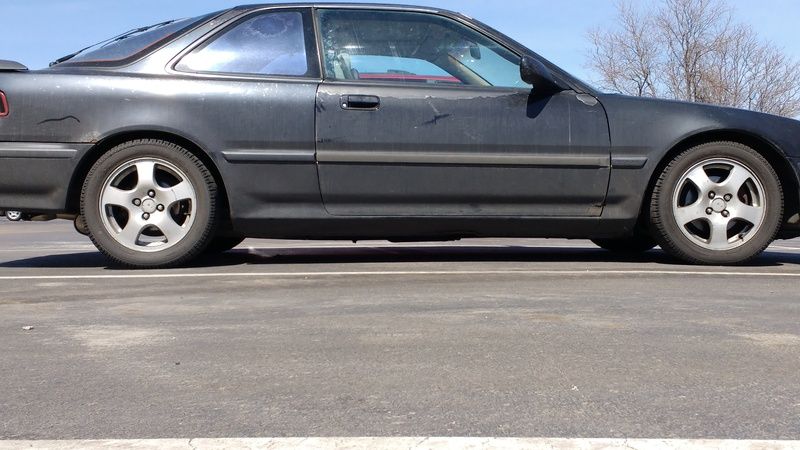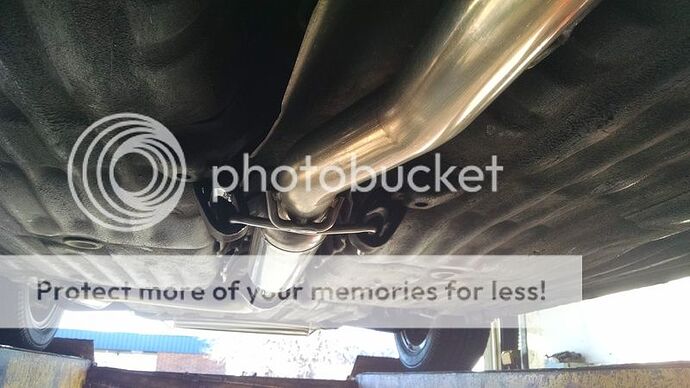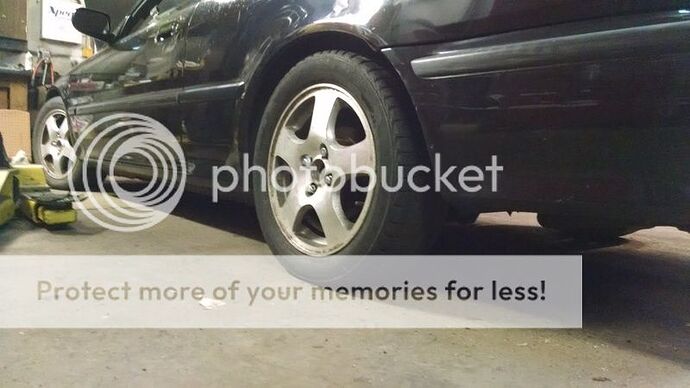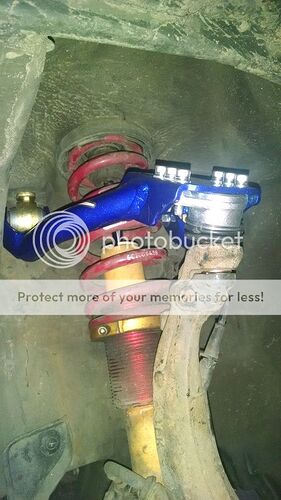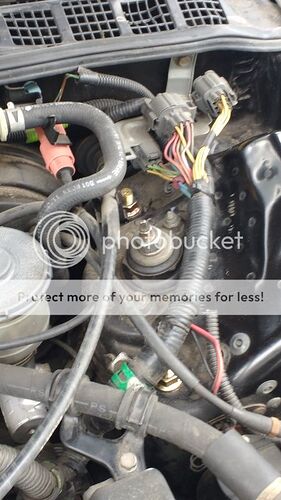[QUOTE=moixana;2333249]
In the grand scheme of lowered cars, that’s what I was thinking. I do realize that a lowwwwwwwwwwww car would need quite a bit of extra maneuvering, and I figured I’d have to drive a little differently in my situation, but I feel like the extra-driving-effort-to-height-ratio isn’t proportionate in this case.[/quote]
Without physically being there and seeing how you’re driving, the roads and obstacles you’re experiencing and how the car is handling it it’s really impossible to tell if there is something wrong here or if it’s just your perception that needs an adjustment (that doesn’t sound nice, but I in no way mean it that way). I will say though that if you spend some time watching other cars drive around you’ll notice that their bumpers are often VERY close to scraping on things (e.g. when entering a driveway). So you gotta imagine that just a minor drop will probably start causing ground clearance issues. Plus, older cars like ours are more prone to scraping than newer cars which have more ground clearance in general.
[QUOTE=moixana;2333249]
I never would have known this. That might be the piece of information I needed! Awesome. I think I’ll take the sleeve off the shock and see if I can’t raise it a little that way.[/quote]
Yeah, check it out and see, with some luck you might be able to get another little bit of height.
[QUOTE=moixana;2333249]
I knew that would come up, so I put it in my original post.

195-55-15 with stock air pressure (whatever it says in the door jam. 32?).[/quote]
EDITED Edited because I apparently I can’t see clearly.EDITEDIf you are running 15’s then 195-55-15 is the best tire option you have for preventing scraping. Personally, I love that tire size for the extra height it gives on a slammed car.
[QUOTE=moixana;2333249]
So does it seem normal for the lowest part of the exhaust to be a full 2 inches lower than the jack points? How many inches difference is there on your cars? And how much clearance do you guys have?[/QUOTE]
I’ve honestly never measured my ground clearance at any point, so unfortunately that’s no help, lol. That doesn’t seem unreasonable to me though. One option I neglected to bring up is the exhaust hangers - yours could be broken, saggy, or even the wrong ones. You can buy new ones, stiffer/shorter aftermarket ones, or you can even use a hose clamp to pull up a sagging hanger. A hose clamp will help you “tune” the hangers but you don’t really want to use this method too much as it begins to negate the whole effect of having rubber (non solid) hangers in the first place.
[QUOTE=moixana;2333249]
Speaking of this…in my effort to raise the car, here’s what I did:
The car was on the lift, tires off, there was a couple inches of room between the bottom of the spring and the perches. So I spun the perches up until they were touching the bottom of the spring (the top of the spring was pushed up into its final resting place), and then I twisted the perch even further. So I was essentially compressing the springs. And probably didn’t get as much height as I could have…? If this is the case…am I to understand that as far as spinning the perch to a higher position is concerned, the highest I can get the car would have been to spin the perches up just until they touched the bottom of the springs but no further?[/quote]
How far did you compress the spring?
[QUOTE=rollinmyda;2333254]I’m not an expert on suspension theory or spring behavior under compression so anyone feel free to correct me if I’m wrong, but my understanding of how a linear (like GC uses) spring behaves is that an 8" spring with a spring rate of 500 lb/inch that is compressed by one inch is going to effectively perform exactly the same as a 7" spring that has the same spring rate of 500 lb/inch.
Now that’s not to necessarily say that GC included the absolute longest springs possible with their kits. I’m fairly sure you would be able to get longer springs and achieve more height that way while still utilizing the spring perches, I was merely stating that there was a limit to how long of a spring you can effectively use. As Colin said though it gets expensive, especially to achieve a near stock ride height.[/QUOTE]
Mike, I do believe you’re a bit mistaken about pre-load. But I too am not an expert here so I definitely suggest anyone reading this do some additional research. First off, pre-load does not change the spring rate, but, it also doesn’t make it work like a shorter spring (in your example of an 8" spring compressed 1"). In your example if you compress an 8" spring by 1" then this means you’ve applied 500lbs of weight to the spring. If you take a normal 7" spring and add 500lbs of weight it will compress by 1". If you take the 8" spring which has already been compressed to 7" you can add 500lbs and the spring will not compress at all. You can think of this as the “energy” stored in the spring from being pre-loaded is essentially holding that 500lbs in place with no further compression. You must then add an additional 500lbs (1000lbs total) to compress the spring an additional inch. So, to summarize: the 7" spring with no pre-load would require 500lbs to compress 1" but the 8" spring which has been pre-loaded will require 1000lbs to compress 1".
Pre-load should raise the vehicle, not lower it. The extreme example here is that if you applied the same amount of pre-load as the weight of the vehicle. In that instance the weight of the car would not compress the spring at all. The suspension would be at full droop (maximum ride height) even with the suspension fully weighted.
Pre-load is a bit of a mystery to me honestly. In your situation I wouldn’t hesitate to add a tiny bit (from what I’ve read a little can be a lot), basically just a turn or two on the collars, but I wouldn’t mess with it more than that for fear of the ride quality changing.
Do you have extended top hats on the car? Any pics of the suspension? I’m not familiar with the stock Koni/GC setup but it just seems odd to me that you’re able to start applying pre-load and the car isn’t sky high. If you’re applying pre-load then the shock is fully extended. A fully extended shock with spring rates that are about double the factory rates should result in a car that sits higher than stock.
